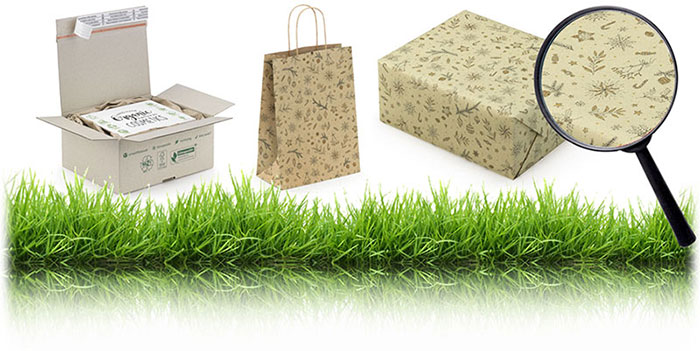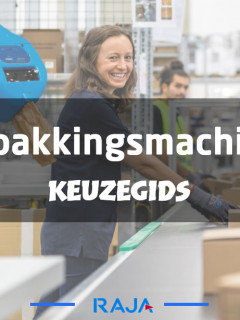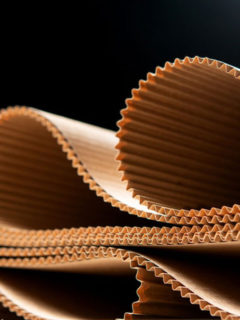As the name predicts, grass paper is partly made from ‘grass’. Using grass as a raw material is a relatively new technique that is increasingly popping up in the packaging world. The advantages are many: you can harvest it several times a year, no chemicals are needed during processing and it requires less water and CO2 emissions. Sustainability at its best! But what exactly is this raw material?
1. What is grass paper?
The most distinctive component of grass paper is undoubtedly the grass itself. That grass creates packaging with a unique look as you can often clearly see the fibres. The use of grass makes grass paper extra durable for several reasons:
-
Grass is a suitable alternative to paper and therefore reduces the demand for wood. Moreover, it grows almost everywhere and can be harvested/mowed several times a year. This makes it one of the fastest renewable raw materials.
-
Up to 50% less water is used in the production of grass paper compared to traditional paper. There are also no chemicals involved as everything is completely mechanical.
-
The cut grass travels a shorter distance to the processing plant, reducing CO2 emissions during transport.
-
Instead of composting or burning grass waste, it now gets a second life. Thus, the resource cycle is closed.
An important fact: grass paper always consists of only part of grass. The rest of the raw material is taken from traditional paper and board or raw wood fibres. This is because grass by itself is not sturdy enough to make paper (it does not contain cellulose, for example). Depending on the final product, grass paper contains up to 50% grass.

2. How is grass paper made?
The grass at the base is first dried after cutting. You then get hay. That hay is then ground and pressed into pellets. These pellets form the basis for the further processing. They are then mixed with wood fibre or traditional paper or cardboard (to give the grass paper a certain strength).
Depending on the final product, the grass pellets can be further processed in different ways. That end product can be packaging, but also a box, label, gift paper, etc.
You can dispose of this raw material with your paper waste or compost it. There are no special instructions involved
3. What products are made from grass paper?
Grass paper was launched commercially for the first time in Belgium and the Netherlands in 2018. A pilot project involving both countries then showed that Flanders and North Brabant have up to 81,000 tonnes of dry grass available annually; ready for processing into grass paper. That dried grass comes largely from the heaths that have to be cut every year.1
This unique raw material has found its way into various packaging materials. At RAJA, grass paper is processed into the following products, among others:
- Cardboard boxesA special selection of our boxes is made of grass paper. They consist of 30% sun-dried grass, supplemented by recycled cardboard. These products are also completely climate-positive. You can find out more on the natureoffice.com website (only available in German).
-
Gift paper, gift bags and carrier bags: all these gift items feature a cosy Christmas motif. These products are made of 15% grass paper, supplemented with recycled paper to guarantee their sturdiness. Totally sustainable raw materials! It also contains no chemical additives.

Sources:
1 www.grasgoed.eu/over-grasgoed/














